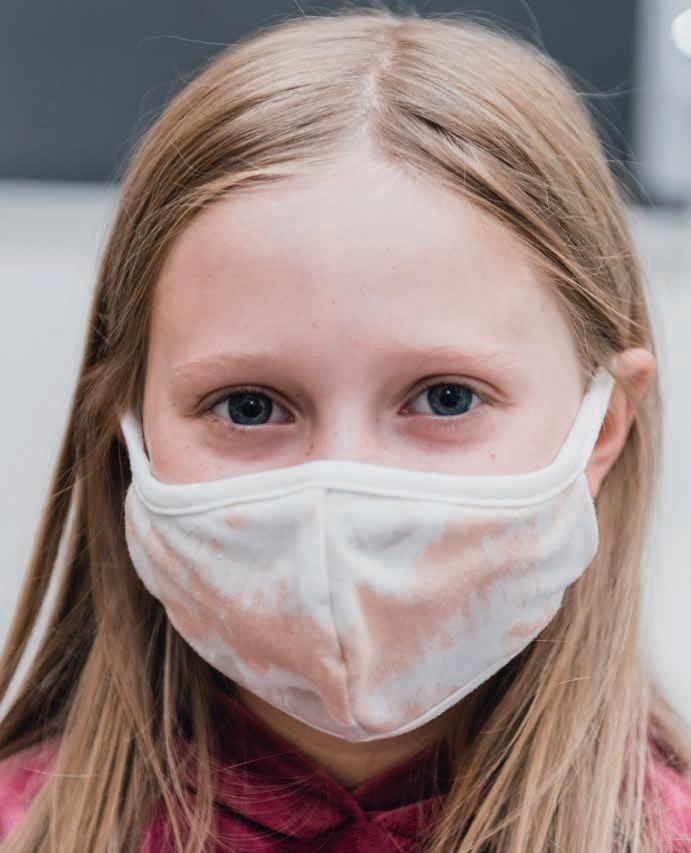CHILD & ADOLESCENT PSYCHIATRY The Division of Child and Adolescent Psychiatry continues to be a highly active, vibrant, and collaborative resource within the Department of Pediatrics at Connecticut Children’s. Our work has focused on a number of areas: meeting the increasing clinical demand for behavioral health assessment and treatment services, close collaboration with other divisions within Connecticut Children’s – both for treatment purposes as well as in the area of clinical pathway evaluation and development, and research efforts in a variety of areas as well as presentations at several national conferences.s During the past year, we have continued to see clinical volumes rise in all of the services in which we play a role. We have continued to participate in the Transitions Clinic in order to provide immediate access to behavioral health services for patients presenting to our emergency department; and we have helped to expand the scope of the Transitions Clinic to provide brief follow-up services for children and adolescents leaving inpatient units and requiring a “bridge” prior to involvement in the next part of their mental health treatment. Our team also has continued to partner with the division of Pediatric Hospital Medicine (PHM) to maintain clinical pathways for our most complicated patients and to provide effective collaborative care models based on extensive research of evidencedbased treatments. Additionally, we continue to partner with the Emergency Medicine division not only in evaluating the many children and their families who present to us in crisis but also to review alternate models to streamlining the movement through our emergency department into appropriate mental health care settings. We have been very fortunate in the past year to welcome four new members to our Child/Adolescent Psychiatry team: Marta Papoosha, MD, has become one of the inpatient physicians on our Adolescent Inpatient
Unit; Sadiq Naveed, MBBS, MD, has also become one of our adolescent inpatient psychiatrists in addition to taking on the clinical lead for all of our inpatient units; Lovejit Kaur, MBBS, MD, assumed a position on our inpatient Consultation/Liaison team at Connecticut Children’s; and Jennifer Downs, MD, took over for Lisa Namerow, MD, as the medical director of our Child/ Adolescent Psychiatry division at Connecticut Children’s. Dr. Namerow stepped down from her previous position but still maintains frequent work and collaboration with our trainees and our Connecticut Children’s colleagues. At Connecticut Children’s, our division’s services include: a Consultation/Liaison service that provides inpatient evaluations on any patient presenting with behavioral health concerns that may indicate co-occurring psychiatric and medical conditions; emergency psychiatric assessment, triage and disposition services within the Connecticut Children’s Emergency Department; and the new Transitions Clinic noted above, located in the outpatient offices at 85 Seymour Street. At the Institute of Living (IOL), clinical services include: individual, group, and family therapies; pharmacotherapy; and diagnostic evaluations. These services are provided through: inpatient units for children and adolescents; the Child and Adolescent Rapid Emergency Services (C.A.R.E.S) unit, a very short-term setting interfacing directly with Connecticut Children’s Emergency Department that focuses on the assessment, stabilization, and disposition of children and adolescents in acute behavioral crisis; the Grace Webb School, a therapeutic educational setting for children and adolescents with co-existing psychiatric and learning difficulties; an outpatient child and adolescent clinic; an extended day treatment program for older school-aged children; and a partial hospital program for children and adolescents. The adolescent program has a specialized track for early onset psychotic disorders. In addition, we continue to serve as one of the hubs for the AccessMental Health CT program, a collaborative educational, consultation and assessment program between primary care providers and child and adolescent psychiatrists providing more than 1,000 phone consults to primary
care physicians (PCPs) yearly, and approximately 2,500 care coordination activities since the program started in June of 2014. Connecticut Children’s and the IOL remain highly active teaching sites for many trainees: child and adolescent psychiatry fellows; general psychiatry residents; psychology interns; pediatric residents and medical students; as well as a post-doctoral psychology fellow who joins our consultation-liaison service for 12 months. In the academic area, Dr. Namerow and her colleagues from the IOL continue to study the benefits and limitation of pharmacogenomics testing on the treatment of children and adolescents with anxiety and depression. Michael Stevens, PhD, and Michal Assaf, MD, of the Olin Neuropsychiatry Research Center remain active in the area of MRI research in such mental health conditions as ADHD, autism, TBI, and mood disorders. Our clinical trials unit, under the leadership of Mirjana Domakonda, MD, continues to have multiple drug treatment studies, including involvement in the international trial of esketamine. And Salma Malik, MD, our fellowship director, continues her work in the areas of pharmacogenomics, homicide assessment, and residency transitions. At the national level, our group has been honored to be selected for a number of presentations at the American Academy of Child and Adolescent Psychiatry Annual Meeting. Our presentations have included such topics as: Internet gaming and obsessive-compulsive disorder; pharmacogenomics; homicide risk assessment; and the use of clinical pathways.
PEDIATRICS
43














































